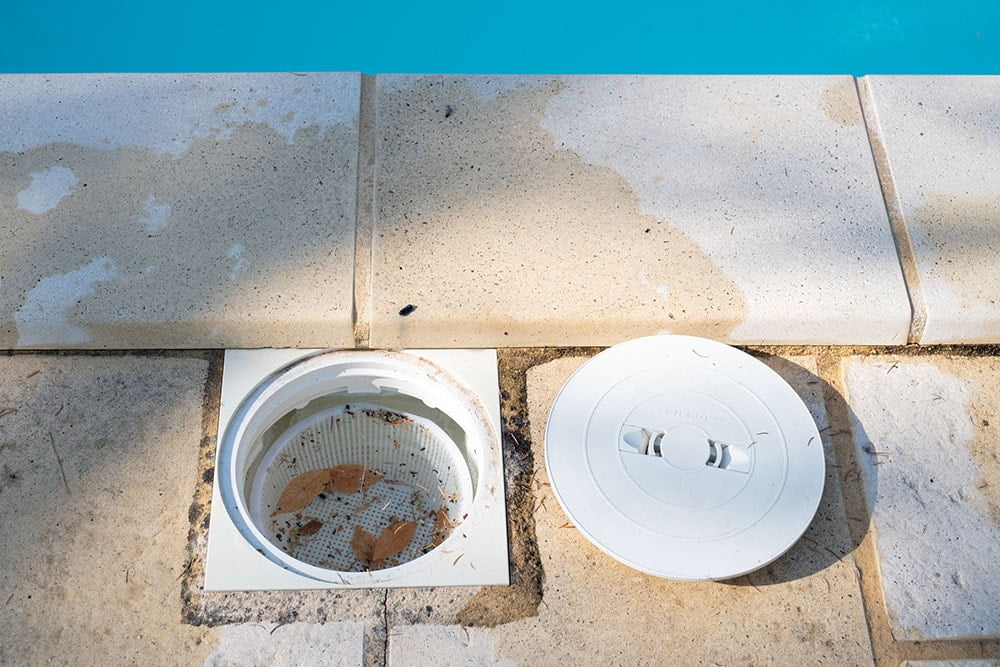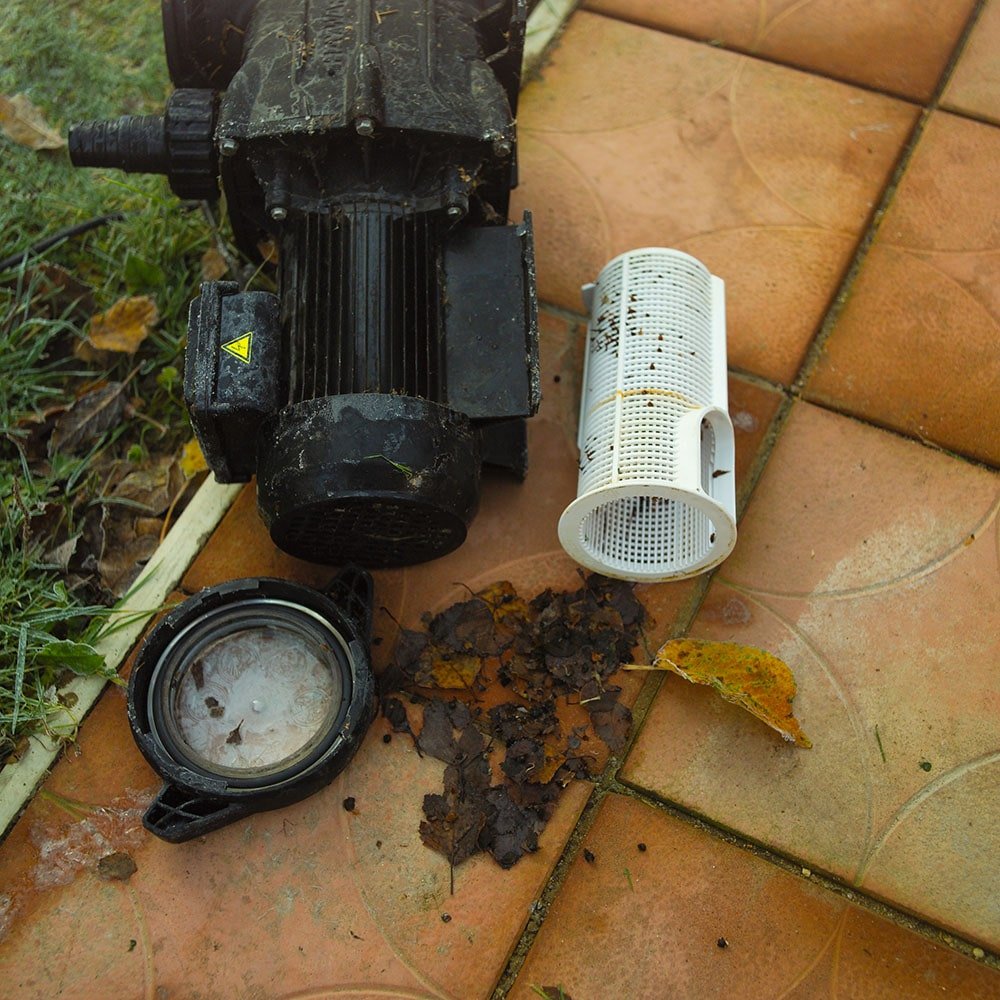Maintaining the right water flow is crucial in ensuring every piece of the pool equipment works appropriately. They all rely on the water pressure, everything from the suction side to the pressure side, with the pool pump being at the center of everything. If there was a problem and your swimming pool is experiencing low water flow, you want to identify its causes and fix it as soon as possible. But how?
Start by making sure the pool skimmer, pump buckets and impeller are free of debris, the water level is halfway the skimmer, eliminate any leaks, the pool pump is primed properly, and the filter is clean. If you find a problem in any of these areas, they cause a low water flow. Fix them, and you’ll have solved the problem.
In the end, you will have carried out the necessary maintenance checks required, found and fixed the low flow problem altogether. I will run you through the few steps to take when dealing with the situation. So, be sure to read this post to the end.
What Are the Possible Causes of Pool Pump Low Flow (Easy Fixes)
Low water flow is a problem with the whole water circulation system. It’s a significant issue as it can wreak havoc on your pool maintenance. If not addressed early, you could be staring at expensive repairs and pool maintenance disasters.
How to Identify a Low Flow in Your Pool Pump System? If you’re experiencing weak return jets, your pool features staying dormant or have stopped working, your pool cleaners are sluggish, or you’re getting constant low flow warnings from your pool heater or saltwater system, you have low water flow in your pool circulation system.
Luckily, identifying the problem causing the low flow is easy and fixing the problem is also straightforward. I will take you through simple ways to identify and resolve these issues in no time.
Understand How Your Pool Works
The best place to start when fixing such a problem is understanding how the swimming pool water circulation works. It has a series of plumbing that runs to ensure the water is circulated and cleaned properly.
The plumbing system has two sides;
- The suction side – comes before the pump and
- The pressure side – comes after the pool pump
The pool pump creates the necessary vacuum needed to pull the water from the swimming pool, and its impeller pushes the water back through the filter for cleaning and other pool equipment. And an issue with the water flow on either side can lead to low flow problems.
Suctions Side Problems Causing Low Flow on Pool Pump and Their Easy Fixes
I will cover the suction side where the water begins to enter the plumbing system before reaching the pump. Here are possible causes and how you can fix them.
1) Low Water Level
Suppose your pool water level is too low, below the desired level, just above the skimmer door. That means the pump will suck air leading to low water pressure. If the water goes too low, the pump might suck too much air and end up losing prime altogether. You want to make sure your pool water level is ideal, halfway to the skimmer door.
2) Debris in the Skimmer or Pump Baskets

Remove the skimmer basket and check it for debris as they might be shutting off the plumbing running down to the pump, thus reducing the amount of water reaching the pump.
Remove the basket and get rid of the debris collected in it as soon as you notice it, as it could lead to your pool pump losing prime.
The same would happen if the pool pump strainer basket were filled with leaves and debris that find their way past the skimmer basket. This stuff can starve the pump, losing its prime; what follows is low water flow.
Check through the transparent pump cover and see if there are any that you can see. With the pump off, open the lid, remove the strainer and get rid of the debris. That should at least eliminate the second possible reason you have a low flow of water.
3) Clogged Pump Impeller
Another often overlooked cause of low water flow in pool pumps is a clogged impeller. If blocked or obstructed, there will be a decrease in suction, thus resulting in reduced water flow through the pool plumbing system.

You can fix this by removing the pump strainer, take a screwdriver and try to reach inside the pump house to the impeller to dislodge any debris you can fill. If this isn’t working, you’ll have to disassemble the pump by separating the pump house and the pump motor.
If you’re not up to the task and you’re sure debris is blocking the impeller, hire a professional to help you out.
4) Pressure-Side Air Leaks
Air leaks can also cause low water flow in your pool pump system. The first sign of a leak is air bubbles coming from the return jets or some building up inside the strainer basket.
If the air leak is significant enough, it can cause enough air into the system to cause the pool pump to lose prime. If the leak is small, it can get sucked up and build at the filter tank, and in time it can get enough to backpressure that can reduce the water flow significantly.
When you shut off the pump, the air build-up can make the water surge back through the suction line and sometimes it can shoot up the column of the skimmer.
The leaks are normally found at the lid drain plugs and an inlet fitting. You want to replace any broken, rearranged or stretched.
You can mix some detergent to create some bubbles and pour it around the pump and any other fitting around it. If the foam is sucked in, then you have found the leak.
Don’t forget to check the diverter valves fittings and unions near the pump if you can find it here. Make sure you fix these leaks before checking out the next cause of the problem.
5) Clogged Line
Lastly, on the suction side, there is a clogged line. If the suction side gets clogged, mainly the main drain or the skimmer line, the amount of water reaching the pump will surely reduce, reducing the water flow altogether.
The easiest way to unclog is to use fish tape and feed it through the plumbing to dislodge the matter clogging. You could also use a plumbing bladder.
All you need is to hook it up to a garden hose and slide it into the suction or skimmer. You’re supposed to turn on the water, and the bladder expands and blow out the clogging matter.
Pressure Side Problems Causing Low Flow on Pool Pump and Their Easy Fixes
Now that you know the possible causes of the pool pump low flow from the suction side, it’s time to check out those on the pressure side.
1) Dirty Filter
Over time the pool filter will accumulate, and it might be the next to restrict your water flow through the swimming pool plumbing system. You will know the filter is dirty if you get high PSI reading on the pressure gauge, which means it needs cleaning.
If you have a sand or DE filter, backwash it. If it’s a cartridge filter, you’ll have to take the cartridge out and give it a nice clean.
Spray the water down the grids using a garden hose. You could also soak it in a filter cleaner to eliminate the oils and grease that are stubborn to normal cleaning.
If the pressure is still high even after cleaning the filter media, you may need to change the sand, DE media, or the cartridge.
2) Water Leaks on the Pressure Side
Water leaks are inevitable when it comes to swimming pools. However, small water leaks around the pool equipment aren’t enough to cause low-pressure problems. But if the water leak is significant and happening underground, it can potentially cause issues.
If you have been adding water to your swimming pool recently or the ground is becoming moist, there is a possibility you have an underground leak, and it’s the cause of your pool pump low flow problem.
I recommend you hire a professional plumber for fixing the underground plumbing.
3) Wrong Size Pump
If your pool pump was working right until you added features like installing a salt system, heat pump, pool heater, a fountain, waterfall, or moving the pool pump a distance further from the swimming pool, you could be overwhelming it.
It might not pump the same gallons it used to pump when you did not add the features. The best fix is to get a bigger pool pump or upgrade the old model’s motor or impeller.
Related Questions
What is the purpose of minimum flow?
The minimum flow is to prevent damage or premature wear and tear of your pool pump. Different pumps have different minimum flow rates depending on their flow rates.


Leave a Comment